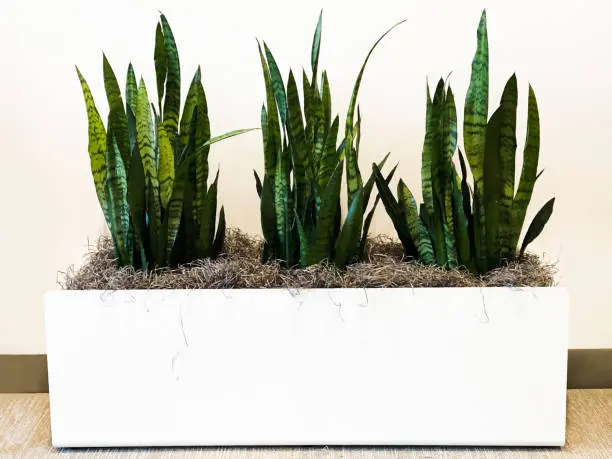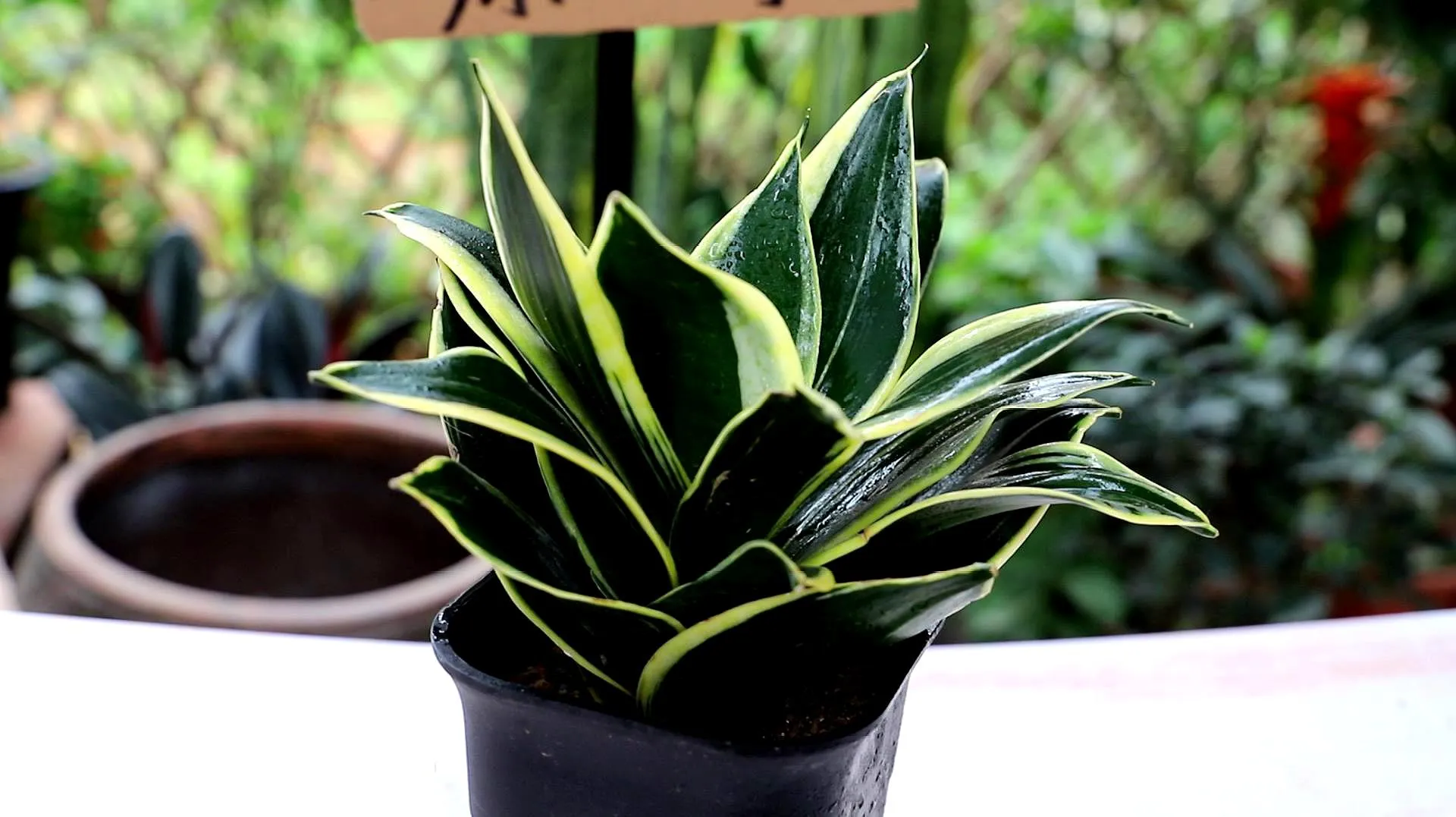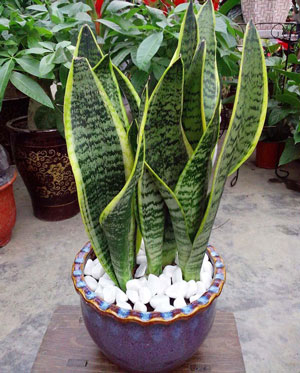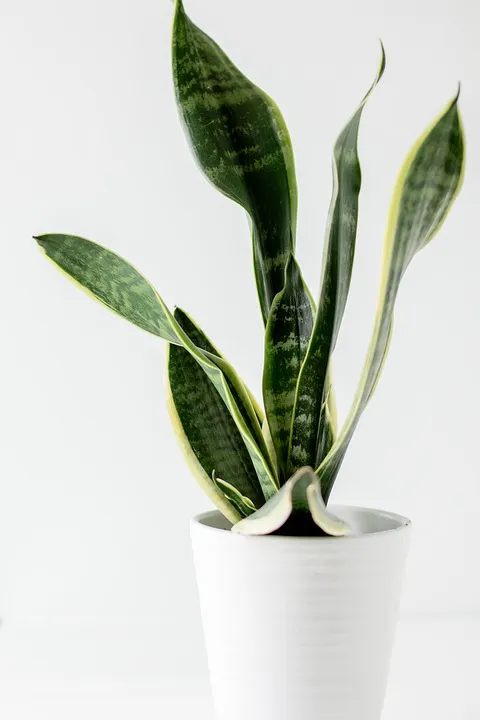Snake Plant: Grow & Care for Sansevieria Trifasciata
Written by Iris
Dec 16 2022

Snake Plant (Sansevieria Trifasciata) leaves erect, plump, strip-shaped, dark green, with horizontal white stripes, resembling a tiger's tail, hence the name. Like warm and humid climate and sufficient sunlight, but also tolerant to half shade. The optimum temperature for growth is 20-30°C. Tiger Piran has upright leaves, resembling tiger tails, strong adaptability and more shade tolerant, and is more suitable for home indoor layout. It can be arranged on a sunny balcony, window sill, or in a bright indoor place. However, if the indoor light is insufficient, the leaf color and markings on the leaf will become lighter and dull.
To encourage the most vibrant colors and healthy growth, set your sansevieria near a north-facing window (of course, that’s a south-facing window, for those of you reading this from the Southern Hemisphere), or a bright window with sheer curtains, or place it a bit farther away from a source of bright sunlight.
If the lighting is too intense, your snake plant’s leaves will turn crisp and yellow at the edges. And although your plant will survive in a location with low light, too little light will result in inhibited growth, muted colors, and plants that have become thin and weakened as they stretch out in search of light. Snake plant is one of the Most Common House Plant.
The water level should be slightly above the V cut. Because root will grow from the cut tissue, this technique helps to lift up most of the cut surface so roots have room to grow.
After about 3 to 5 weeks, you will see roots growing from the bottom of the leaf cuttings. In another 2 to 3 weeks, tiny pups will start growing. You can transplant the cuttings in soil or just let them keep growing in water.
Take your plant out of the pot, or dig up a clump from the soil. Use clean and sharp knife or scissors to divide the root clump. Each division should have roots and some leafy top or pups attached.
Plant the divided clumps in their new pots or in the garden. This method creates more room for new growth as your plant multiplies.
This causes the plant's water storage cells to become overfilled, which causes irreparable damage to the cell structures and eventually leads to Snake Plant Root Rot. A good way to determine how often you should water your overwatered snake plant is to simply allow the potting mixture to dry out completely before watering again. As with most plants, sansevierias need more frequent watering during the summer, when they are undergoing active growth, so you should water your plant again as soon as it has dried out during this time of year. The frequency will depend on conditions such as the amount of light, temperature, and humidity of the plant's environment.
‘Bird’s Nest’ — Short, wide leaves of dark and light green form a tight nest shape, like that of a bromeliad. Leaves only grow 6 to 8 inches long. This variety does need much light to grow well.
‘Golden Hahnii’ — Like the standard ‘Bird’s Nest’, but with leaves variegated along the edge in yellow.
‘Cylindrical Snake Plant’ — As its name suggests, this species of snake plant has cylindrical leaves that end in a fierce point.
‘Starfish Snake Plant’ — The starfish snake plant has cylindrical leaves that fan out from its base, giving it a starfish-like shape.
‘Whale Fin’ — These interesting snake plants have large, wide leaves that resemble the fin of a whale breaching the water's surface.
For larger floor plants, we suggest repotting every 18-24 months. Typically you want to choose a potting vessel 2”- 4” larger in diameter to allow for growth. Don't choose a pot much larger than the previous as this could drown the plants roots. If you prefer to maintain the current size of your plant, repot into the same vessel, providing new soil and trimming away some roots and foliage. Spring or summer is the ideal time to repot as the plant is at its strongest.
Where to Grow Snake PlantHow to Grow Snake PlantSnake Plant Propagation with Leaf CuttingsSnake Plant Propagation with DivisionHow to Care for Snake PlantSnake Plant Lighting RequirementsSnake Plant Soil CareSnake Plant WateringSnake Plant Temperature & Humidity CareSnake Plant FertilizerSnake Plant Pests & Diseases CareVarieties of Snake PlantSnake Plant Care FAQHow can I tell if I am overwatering my Snake Plant?How can I tell if I am underwatering my Snake Plant?Can my Snake Plant tolerate really low light?How often should I fertilize Snake Plant?How often does Snake Plant need to be repotted?
Where to Grow Snake Plant
While snake plants are famously unfussy and are especially well-known for tolerating low-light conditions, you can show your snake plant a little love by placing it in a location with indirect or filtered sunlight.To encourage the most vibrant colors and healthy growth, set your sansevieria near a north-facing window (of course, that’s a south-facing window, for those of you reading this from the Southern Hemisphere), or a bright window with sheer curtains, or place it a bit farther away from a source of bright sunlight.
If the lighting is too intense, your snake plant’s leaves will turn crisp and yellow at the edges. And although your plant will survive in a location with low light, too little light will result in inhibited growth, muted colors, and plants that have become thin and weakened as they stretch out in search of light. Snake plant is one of the Most Common House Plant.
How to Grow Snake Plant
Snake Plant Propagation with Leaf Cuttings
Cut off a healthy Snake plant leaf near its base. Make a notched upside down V cut at the bottom, and place the leaf in a clean jar of water.The water level should be slightly above the V cut. Because root will grow from the cut tissue, this technique helps to lift up most of the cut surface so roots have room to grow.
After about 3 to 5 weeks, you will see roots growing from the bottom of the leaf cuttings. In another 2 to 3 weeks, tiny pups will start growing. You can transplant the cuttings in soil or just let them keep growing in water.
Snake Plant Propagation with Division
Division, in horticulture and gardening, is a method of plant propagation, where the root clump of a plant is broken up into two or more parts. Both the root and crown of each part is kept intact.Take your plant out of the pot, or dig up a clump from the soil. Use clean and sharp knife or scissors to divide the root clump. Each division should have roots and some leafy top or pups attached.
Plant the divided clumps in their new pots or in the garden. This method creates more room for new growth as your plant multiplies.
How to Care for Snake Plant
Snake Plant Lighting Requirements
Although they are very forgiving, snake plants prefer indirect but steady light with some direct sun. They can adapt to full sun conditions and will also survive quite dim situations. (Read more about How Much Light Does Snake Plant Need.)Snake Plant Soil Care
Sansevieria plants prefer a loose, well-drained potting mix. This plant will do well in sandier soils. Pick a potting media low in peat, which eventually packs and refuses to re-hydrate or drain properly. An all-purpose cactus potting soil is a good choice.Snake Plant Watering
When it comes to watering snake plant, less is truly best. While these plants may not be fussy about much, snake plants will begin rotting quickly when their growing medium is too moist. What happens in this situation is that the roots take up more and more water, in a desperate attempt to gain the oxygen that's been displaced by water in the growing medium.This causes the plant's water storage cells to become overfilled, which causes irreparable damage to the cell structures and eventually leads to Snake Plant Root Rot. A good way to determine how often you should water your overwatered snake plant is to simply allow the potting mixture to dry out completely before watering again. As with most plants, sansevierias need more frequent watering during the summer, when they are undergoing active growth, so you should water your plant again as soon as it has dried out during this time of year. The frequency will depend on conditions such as the amount of light, temperature, and humidity of the plant's environment.
Snake Plant Temperature & Humidity Care
The best temperature for your Sansevieria Trifasciata is around the average room temperature in most homes. Be sure that you protect your plant from drafts and fresher air as it could start to damage as the temperature reaches below 10°C (50°F)Snake Plant Fertilizer
When fertilizing your Sansevieria Trifasciata, be sure that you do so every three weeks during the summer. A most common way to feed your plant is by using a diluted to one-half of a strength fertilizer as it should be explained on the container. Sansevieria Trifasciata requires a lot of light, but if you fertilize your plant too much, expect your plant to start losing leaves.Snake Plant Pests & Diseases Care
Rarely will you encounter any serious pest or disease problems, but be on the lookout for white mealybugs, which can easily be removed with cotton swabs dipped in 70% rubbing alcohol (not 99%—this strength will kill plants).
Varieties of Snake Plant
‘Bantel’ Sensation’ — Narrow leaves have white vertical stripes and grow to about 3 feet long. This variety can be hard to find.‘Bird’s Nest’ — Short, wide leaves of dark and light green form a tight nest shape, like that of a bromeliad. Leaves only grow 6 to 8 inches long. This variety does need much light to grow well.
‘Golden Hahnii’ — Like the standard ‘Bird’s Nest’, but with leaves variegated along the edge in yellow.
‘Cylindrical Snake Plant’ — As its name suggests, this species of snake plant has cylindrical leaves that end in a fierce point.
‘Starfish Snake Plant’ — The starfish snake plant has cylindrical leaves that fan out from its base, giving it a starfish-like shape.
‘Whale Fin’ — These interesting snake plants have large, wide leaves that resemble the fin of a whale breaching the water's surface.
Snake Plant Care FAQ
How can I tell if I am overwatering my Snake Plant?
Overwatering results in mushy brown stalks. Hold off on watering and prune your plant. Only when the soil is completely dry all the way through the pot is your plant ready for a drink. (Read more about saving overwatering snake plant.)How can I tell if I am underwatering my Snake Plant?
Though difficult to do, the underwatering snake plant is not impossible and results in dry crispy tips on the plant's leaves. If this is the case, prune your plant and increase your frequency of watering. (Read more about saving underwatering snake plant.)Can my Snake Plant tolerate really low light?
It can, however this is likely to stunt the growth of your plant. Also the risk of overwatering becomes heightened, so take extra care when placing you plant in low light conditions.How often should I fertilize Snake Plant?
In general, house plants will thrive when they are fertilized spring through fall. Fertilize once a month with an organic houseplant fertilizer, following the package instructions for dilution and administration. Greenery NYC uses an organic potting mix with a slow release fertilizer in the soil, so your plant will not need fertilizer within the first 6 months of receiving it.How often does Snake Plant need to be repotted?
For smaller desktop plants, we suggest repotting Snake Plant once every 12-18 months. Typically you want to choose a potting vessel 1”- 2” larger in diameter to allow for growth. Don’t choose a pot much larger than the previous as this could drown the plant's roots. If you prefer to maintain the current size of your plant, repot into the same vessel, providing new soil and trimming away some roots and foliage. Spring or summer is the ideal time to repot as the plant is at its strongest.For larger floor plants, we suggest repotting every 18-24 months. Typically you want to choose a potting vessel 2”- 4” larger in diameter to allow for growth. Don't choose a pot much larger than the previous as this could drown the plants roots. If you prefer to maintain the current size of your plant, repot into the same vessel, providing new soil and trimming away some roots and foliage. Spring or summer is the ideal time to repot as the plant is at its strongest.
Read More:
- How Much Light Does Snake Plant Need
- How Often to Water Snake Plant
- How To Fix Snake Plant Root Rot
- Underwatered Snake Plant - Signs And How To Fix
- How To Save Overwatered Snake Plant
- How to Get a Snake Plant to Bloom with Simple Ways
- Is Snake Plant Poisonous to Cats - How to Prevent
- What Are the Benefits of Snake Plants - Everything You Need to Know
- How to Reroot A Snake Plant With Simple Steps
Latest Updated
- Benefits of Bugleweed - 7 Science-backed Health Benefits
- Bugleweed Dangers & Side Effects - Is It Poisonous?
- How to Plant Evergreen Trees - What You Should Know
- When to Plant Evergreens - Grow Guide for Evergreen Trees
- 12 Wonderful Evergreen Shrubs for Your Garden
- 12 Popular Evergreen Plants with Pictures for Beginners
- When And How To Prune A Lilac Bush Like a Pro
- How to Grow & Care for Lilac Vine (Hardenbergia Violacea)
- Japanese Lilac Tree (Syringa Reticulata) Care & Propagation Guide
- Shumard Oak Pros and Cons - What to Know
Popular Articles
- Winter maintenance of Antirrhinum Majus
- How to Grow Terminalia Mantaly Tree
- How to Grow and Care for Crossostephium Chinense
- How to grow Antirrhinum Majus in spring
- Peristeria Elata (Dove Orchid) Profile: Info & Care Guide
- Underwatered Snake Plant (Sansevieria Trifasciata) - Signs And How To Fix
- How to Care for Brazilian Jasmine Plant (Mandevilla Sanderi)
- How to Grow & Care for Graptopetalum Purple Delight in Summer
- Rosa Chinensis (China Rose): Plant Growing & Care Tips
- How to Care for Baby Sun Rose (Aptenia Cordifolia)

